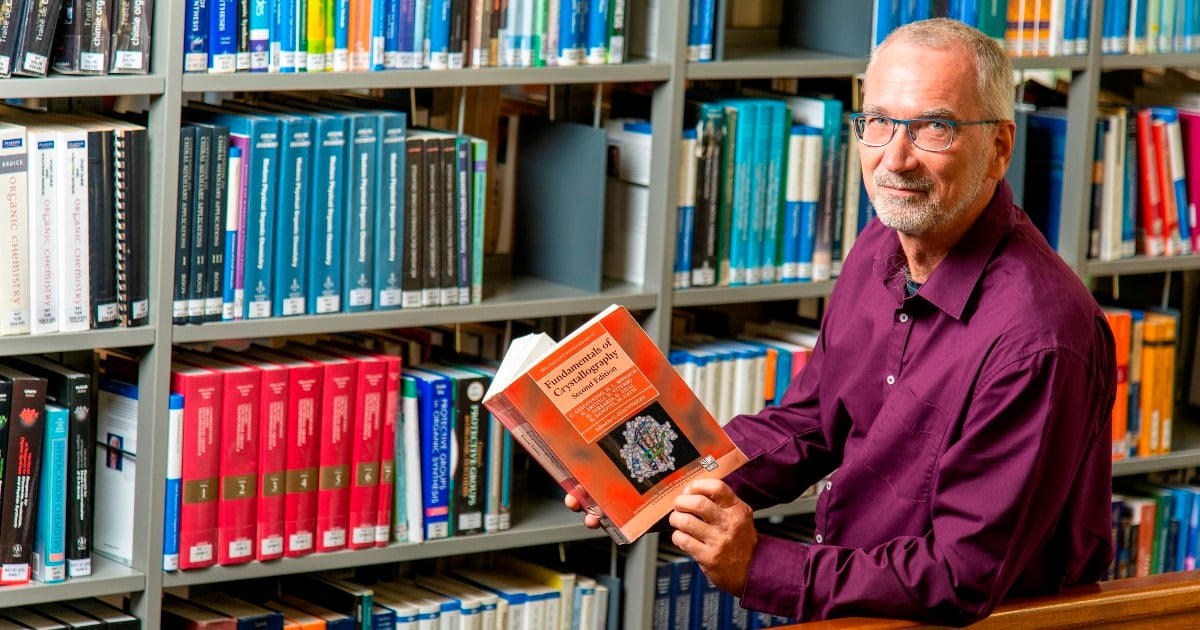A Themed Issue in Honor of Prof. Radovan Cerny—Materials Science, Energy Storage, Diffraction and Crystal Chemistry
A special issue of Inorganics (ISSN 2304-6740). This special issue belongs to the section "Inorganic Materials".
Deadline for manuscript submissions: closed (31 August 2024) | Viewed by 11495

Special Issue Editors
Interests: electrochemistry; solid-state electrolytes; mechanochemistry; operando characterization techniques; CO2 caption
Interests: energy materials; X-ray scattering; small angle scattering; material characterization; perovskite photovoltaics; MOF
Interests: synthesis and characterization of inorganic materials; structural, chemical and physical properties; synchrotron and neutron diffraction
Special Issues, Collections and Topics in MDPI journals
Interests: synthesis and characterization of inorganic materials; structural, chemical and physical properties; energy storage as hydrogen or electricity in novel types of batteries; multivalent solid state batteries
Special Issues, Collections and Topics in MDPI journals
Special Issue Information
Dear Colleagues,
Crystallography and structural chemistry have provided deep insights into the solid state for around a century now. This knowledge is today the basis for understanding the relationship between structure and physical properties; however, even today, careful analysis of crystal chemistry often leads to interesting structural generalizations and also to surprising analogies between new and known materials. This approach provides new ideas for structural design and acts as a guide to making significant progress. The understanding of crystal chemistry is largely intuitive, that is, it is based on experience with crystallography, chemistry and structural science. Once they have obtained this expertise, a scientist may be called a ‘crystal chemist’. However, this knowledge is not isolated in its own community and only within interactions between chemists and physicists, but is greatly strengthened by using theoretical and computational methods to rationalise bonding in a solid state, and also by using complementary methods to characterize atomic motion, diffusion mechanisms, and gas release and uptake, etc. Therefore, herein we present a Special Issue entitled "Materials Science, Energy Storage, Diffraction and Crystal Chemistry", to highlight the central role of crystallography in the understanding of structure and properties of energy-related materials, and to celebrate the outstanding career of a world-renowned expert in crystallography, Prof. Dr. Radovan Černý, on the occasion of his retirement.
Radovan Černý is a Swiss crystallographer of Czech origin who has made great contributions to the powder diffraction methodology and crystal chemistry of intermetallics and metal hydrides, and more generally to the research field of energy storage materials science. He obtained his PhD degree at Charles University in Prague in the field of solid-state physics under the supervision of V. Valvoda, studying the alloys of hard materials based on the carbides, nitrides and oxides of titanium with X-ray powder diffraction.
From 1989–1990, he spent one year at the Institute of Mineralogy and Crystallography, University of Göttingen, in the Crystallography Laboratory of V. Kupčík, where he studied the microstructure of TiN thin films and developed texture correction in Seemann–Bohlin diffractometry. This work on TiN films was a part of a very successful project running in the Crystallography Laboratory at the Charles University in Prague, resulting in several important publications in the field of polycrystalline thin films.
Shortly after his return to Prague and defence of his thesis, he joined the faculty of the University of Geneva, where he worked first as a Post-Doctoral Fellow and then as "Maître d'enseignement et de recherche" in the Laboratory of Crystallography. In the same laboratory, he had the opportunity to collaborate with H. Flack, a world-wide expert in chirality studies by diffraction. In 2012, he was promoted to Associate Professor, and took full responsibility for the laboratory. He retired in August 2022, and continues his activities as an Emeritus Professor.
One of his scientific interests is crystallography in general, and more specifically powder diffraction methodology. This interest led to a collaboration with V. Favre-Nicolin, and to the development of the FOX software (fox.vincefn.net), which is widely used in the scientific community.
Another important contribution of Radovan Černý is the crystal chemistry of intermetallic compounds and metal hydrides. In Geneva, he had the opportunity to work with E. Parthé and to collaborate, among others, with O. Bodak and R. Gladyshevskii, part of a globally recognized group in this field, at the Ivan Franko National University in Lviv, Ukraine. Intermetallic compounds have been intensively studied also at the Department of the Solid-State Physics (today, the Department of Quantum Matter Physics) in which the Crystallography Laboratory is located. The crystal structure of YbCu4.5, the most complex inorganic structure to be solved by the diffraction at that time, resulted from this collaboration. Later on, a whole series of intermetallic phases built using the same principle were discovered and named Černý's phases.
His work on metal hydrides began in Geneva in collaboration with K. Yvon, first as solid hydrogen stores and later as solid-state electrolytes. Together with his colleagues from the laboratory, Radovan Černý characterized the crystal structure, synthesis, reactivity and decomposition pathways of many intermetallic hydrides and complex hydrides such as metal hydridoborates, hydridoaluminates, imides and amides. Several excellent solid-state electrolytes for Na-ion batteries, based on closo-dodecahydridoborate anion and its carbon-substituted analogues, have been developed by his group.
Radovan Černý is also interested in the characterization of mineral species in collaboration with H. Sarp from the Museum of Natural History in Geneva. Nine new minerals have resulted from this collaboration, and the mineral Radovanite was named on his honor. He has long been active in the crystallographic community, first in the Czech and Slovak Crystallographic Association and later as president of the Swiss Crystallographic Association, a member of the EPDIC committee, and organizer of the EPDIC-10 meeting in Geneva.
We are pleased to invite you to submit a manuscript to this Special Issue; regular articles, communications, and reviews are all welcome.
Dr. Fabrizio Murgia
Dr. Pascal Schouwink
Prof. Dr. Yaroslav Filinchuk
Prof. Dr. Torben R. Jensen
Guest Editors
Manuscript Submission Information
Manuscripts should be submitted online at www.mdpi.com by registering and logging in to this website. Once you are registered, click here to go to the submission form. Manuscripts can be submitted until the deadline. All submissions that pass pre-check are peer-reviewed. Accepted papers will be published continuously in the journal (as soon as accepted) and will be listed together on the special issue website. Research articles, review articles as well as short communications are invited. For planned papers, a title and short abstract (about 100 words) can be sent to the Editorial Office for announcement on this website.
Submitted manuscripts should not have been published previously, nor be under consideration for publication elsewhere (except conference proceedings papers). All manuscripts are thoroughly refereed through a single-blind peer-review process. A guide for authors and other relevant information for submission of manuscripts is available on the Instructions for Authors page. Inorganics is an international peer-reviewed open access monthly journal published by MDPI.
Please visit the Instructions for Authors page before submitting a manuscript. The Article Processing Charge (APC) for publication in this open access journal is 2200 CHF (Swiss Francs). Submitted papers should be well formatted and use good English. Authors may use MDPI's English editing service prior to publication or during author revisions.
Benefits of Publishing in a Special Issue
- Ease of navigation: Grouping papers by topic helps scholars navigate broad scope journals more efficiently.
- Greater discoverability: Special Issues support the reach and impact of scientific research. Articles in Special Issues are more discoverable and cited more frequently.
- Expansion of research network: Special Issues facilitate connections among authors, fostering scientific collaborations.
- External promotion: Articles in Special Issues are often promoted through the journal's social media, increasing their visibility.
- e-Book format: Special Issues with more than 10 articles can be published as dedicated e-books, ensuring wide and rapid dissemination.
Further information on MDPI's Special Issue policies can be found here.








